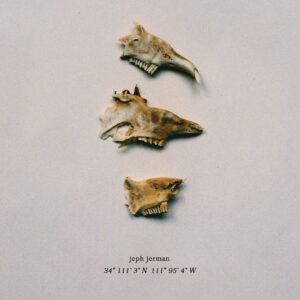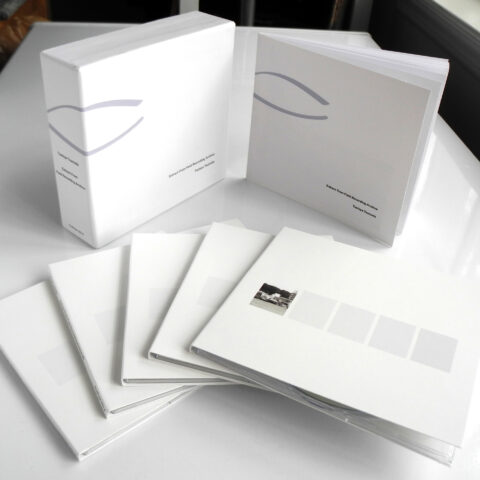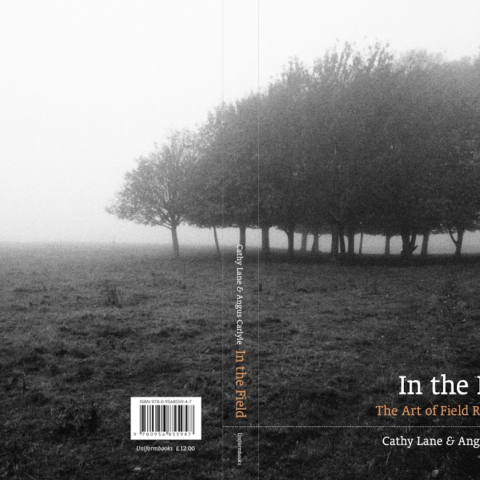
The way images and objects relate to sound recordings is a constant two way flow. I’m currently listening to 34°111’3-N 111°95’4-W by Jeph Jerman on the Mappa label, and at the same time I’m looking at a photograph of the small objects Jeph found in the area. They sit like evidence on a white background.
A black rectangle with two round holes. An electrical connector with blue wire. A rusted washer. Articulated vertebrae. Rodent jaw bones. Various bent wires. Part of a switch…
According to the text accompanying the Bandcamp release of 34°111’3-N 111°95’4-W, Jeph is interested in pure sound without references. However I’ve been wandering with my eyes over these scraps of forgotten detritus and mapping their curves, angles, decayed surfaces, bony textures and unknown origins while listening to the three tracks. I might be contravening Jeph’s ethos, but the sounds are very corporeal and physical. Giving them visual contours to happen against works for me.
I’m not suggesting for one second that these objects were used in the composition, because they are very small. Each one small enough to give away as a supplementary gift with the first 35 releases of the 34°111’3-N 111°95’4-W cassette release. The substance of the sound here are quite large metallic agitations and scrapes redolent of rusty engineering in a derelict world. Although for one moment human voices intervene surprisingly, for the largest part the surroundings seem isolated.
The focus is an abandoned windmill once used to draw water from the ground and into two large nearby tanks. The internal workings of the mill are now strewn on the ground and lie prone to the entropy that comes to all forgotten things. The examination of this place’s ghosts and meanings comprises three tracks made over two years in different conditions but with a unity of philosophy.
As monaural recordings are used, and the main attribute one might expect from a mill is rotation, the turning of things is not conveyed by stereo placement. It is conveyed by the grain of surfaces against each other. The rub of rust onto more rust. A knowledge of motion and stasis and the points between.
Listening to monaural soundwork forces the brain to create a place for each component of the whole and to allot implicit co-ordinates. Some distant, some over to one side, some outside the focus and some so close as to be almost within the ear. It in no way detracts, but rather allows another level for the listener to work with. Of course it is equally possible to listen without any work at all accepting sounds as sounds, but I personally make pictures.
I can’t remember the piece in question, but my wife was recently talking to a classical violinist friend of hers about some music and she said it reminded her of alpine pastures with mountain sheep grazing, wild flowers and a bright sun in the cool air. Her friend said he never pictured anything when he heard music but just thought about the architecture of the notes and the technical requirements of playing. I personally make pictures.
I see the windmill and the shapes of jawbones. I follow the curves of bent metal and the textures of decay. The movement of machinery that once had purpose and now has none. The desolation and the way work comes to nothing and becomes reabsorbed into earth and air.
34°111’3-N 111°95’4-W is available now as a download. I don’t own a functional cassette player, otherwise I would have bought one of the tapes together with its mystery object in a hessian bag. They are long sold out anyway. Instead I have the sound and the phantom of a machine’s lost soul.





